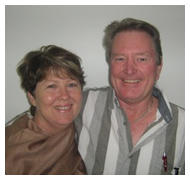While the history of companion planting worldwide does not appear to well-documented in a format that ordinary gardeners can access, there are snippets of information, as well as academic theses, that propound theories of why and how companion planting works, and stories about some of the civilizations that have used the idea in the past.
Many people refer to companion planting as a kind of traditional gardening practice that is undertaken on a small scale. But in more recent years, the science of agronomy along with horticultural agriculture has developed the same concept for large-scale operations. These include intercropping, which is a form of polyculture that involves planting species of plants together for mutual benefit. It’s essentially all one and the same!
While there was no known scientific explanation for the success of companion planting in centuries past, subsequent studies show that it works.
In 1943, a pioneer in the field of modern companion planting, Richard B Gregg, published a pamphlet he entitled Companion Plants and How to Use Them. A good 20-something years later, his book on the same subject was published, along with his own garden experiments,and some laboratory experiments carried out by German scientist, Dr. Ehrenfried Pfeiffer, a renowned pioneer in the field of biodynamic farming.

Dr. Ehrenfried Pfeiffer was a German scientist (and soil scientist) who worked with Rudolf Steiner, founder of Anthroposophy (which teaches how humans can be systematically trained to perceive a spiritual world). Later he became manager and director of an experimental biodynamic farm in Holland. In 1938 Dr. Pfeiffer published what became a hugely influential book, Bio-Dynamic Farming and Gardening that popularised the earlier teachings of Steiner. He was also instrumental in forming the US-based Biodynamic Farming & Gardening Association.
In 2008 an updated version of the book, co-authored by Helen Philbrick, was published by the North American Biodynamic Farming and Gardening Association (BDA) which aims to renew and grow a worldwide interest in biodynamics.
Essentially the worldwide biodynamic movement aims to renew interest in the way spiritual forces work both in nature and human social life. It is understood to be the oldest, non-chemical agricultural movement, pre-dating “organic agriculture” by about two decades.
Essentially an holistic method of organic farming, biodynamic agriculture relies on the inter-relationship of the soil, plants and animals in a particular environment, to nourish the earth and develop sustainability. Artificial fertilisers and toxic herbicides and pesticides are taboo. Instead manure and naturally formed compost (to which fermented herb and minerals are added) are used. The method also relies heavily on astronomical (rather than an astrological) sowing and planting.

